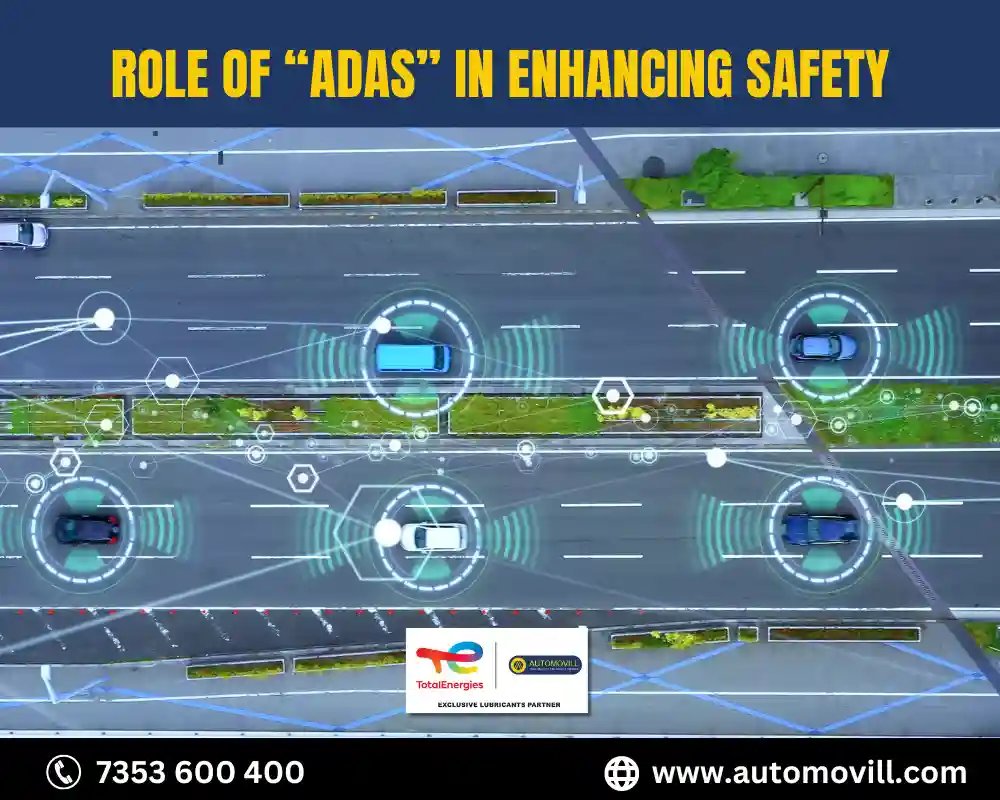
In today’s world, where technology is constantly evolving, it is no surprise that the automotive industry is also seeing its fair share of advancements.
One of the most significant areas of progress is in the development of Advanced Driver Assistance Systems (ADAS). ADAS is a collection of technologies that are designed to assist drivers in performing various tasks and ultimately improve road safety.
What is ADAS?
ADAS is a variety of systems that use sensors, cameras, and radar to detect the environment around a vehicle and provide the driver with information or take corrective actions as needed.
Some of the most common ADAS features include:
- Lane departure warning (LDW): This system alerts the driver if the vehicle is unintentionally drifting out of its lane.
- Adaptive cruise control (ACC): This system automatically adjusts the vehicle’s speed to maintain a safe distance from the car in front.
- Automatic emergency braking (AEB): This system can automatically apply the brakes if it detects a potential collision.
- Blind-spot monitoring (BSM): This system warns the driver if there is a vehicle in their blind spot.
- Traffic sign recognition (TSR): This system can recognize traffic signs and display them on the dashboard.
- Lane keeping assist (LKA): This system detects unintentional lane departure and gently steers the car back within the lane markings, preventing potentially dangerous swerves.
- Rear cross traffic alert (RCTA): When reversing out of a parking space or driveway, RCTA warns of approaching vehicles in your blind spots, reducing the risk of collisions.
Levels of ADAS: Understanding the Hierarchy
The Society of Automotive Engineers (SAE) has defined six levels of ADAS automation, each representing an increasing level of driver assistance:
- Level 0: No automation, the driver is in complete control.
- Level 1: Driver assistance features like lane departure warning or adaptive cruise control.
- Level 2: Partial automation, the car can control certain aspects like steering or acceleration under specific conditions, but the driver must remain engaged and ready to take over.
- Level 3: Conditional automation, the car can handle most aspects of driving in certain environments, but the driver must be prepared to intervene if needed.
- Level 4: High automation, the car can handle all aspects of driving in specific environments, but the driver may not need to be present.
- Level 5: Full automation, the car can handle all aspects of driving in any environment, without human intervention.
Currently, most commercially available vehicles fall under Levels 1 and 2, with Level 3 features slowly emerging. As technology progresses, we can expect to see a gradual shift towards higher levels of automation.
Benefits of ADAS
There are many benefits to using ADAS, including:
- Reduced accidents: Studies have shown that ADAS can significantly reduce the number of accidents, injuries, and fatalities on the road. For example, a study by the National Highway Traffic Safety Administration (NHTSA) found that LDW can reduce lane departure crashes by up to 50%.
- Improved safety: ADAS can help drivers stay alert and avoid accidents by providing them with information and taking corrective actions when necessary.
- Reduced driver fatigue: Features such as ACC can help to reduce driver fatigue by taking over some of the tasks of driving, such as maintaining a safe distance from other vehicles.
- Increased fuel efficiency: Some ADAS features, such as ACC, can help to improve fuel efficiency by optimizing vehicle speed and braking.
Challenges of ADAS
Despite the many benefits of ADAS, some challenges need to be addressed. These include:
- Cost: ADAS can be expensive, which can make them unaffordable for some drivers.
- Reliability: ADAS systems are complex and can sometimes malfunction. Drivers need to be aware of the limitations of these systems and not rely on them completely.
- Distraction: Some ADAS features, such as lane departure warning, can be distracting for drivers. Drivers need to use these features responsibly and avoid paying too much attention to them.
Future of ADAS
ADAS is a rapidly evolving technology, and we can expect to see even more advanced features in the years to come. Some of the future trends in ADAS include:
- More sophisticated sensors: ADAS systems will use more sophisticated sensors, such as lidar and radar, to provide a more comprehensive view of the environment around the vehicle.
- Greater automation: ADAS systems will become more automated, eventually leading to the development of self-driving cars.
- Improved connectivity: ADAS systems will be able to connect to other vehicles and infrastructure, which will allow them to share information and make better decisions.
Conclusion
ADAS is a promising technology that has the potential to make our roads safer.
As ADAS continues to evolve, it is important for drivers to be aware of the benefits and challenges of these systems and to use them responsibly.
